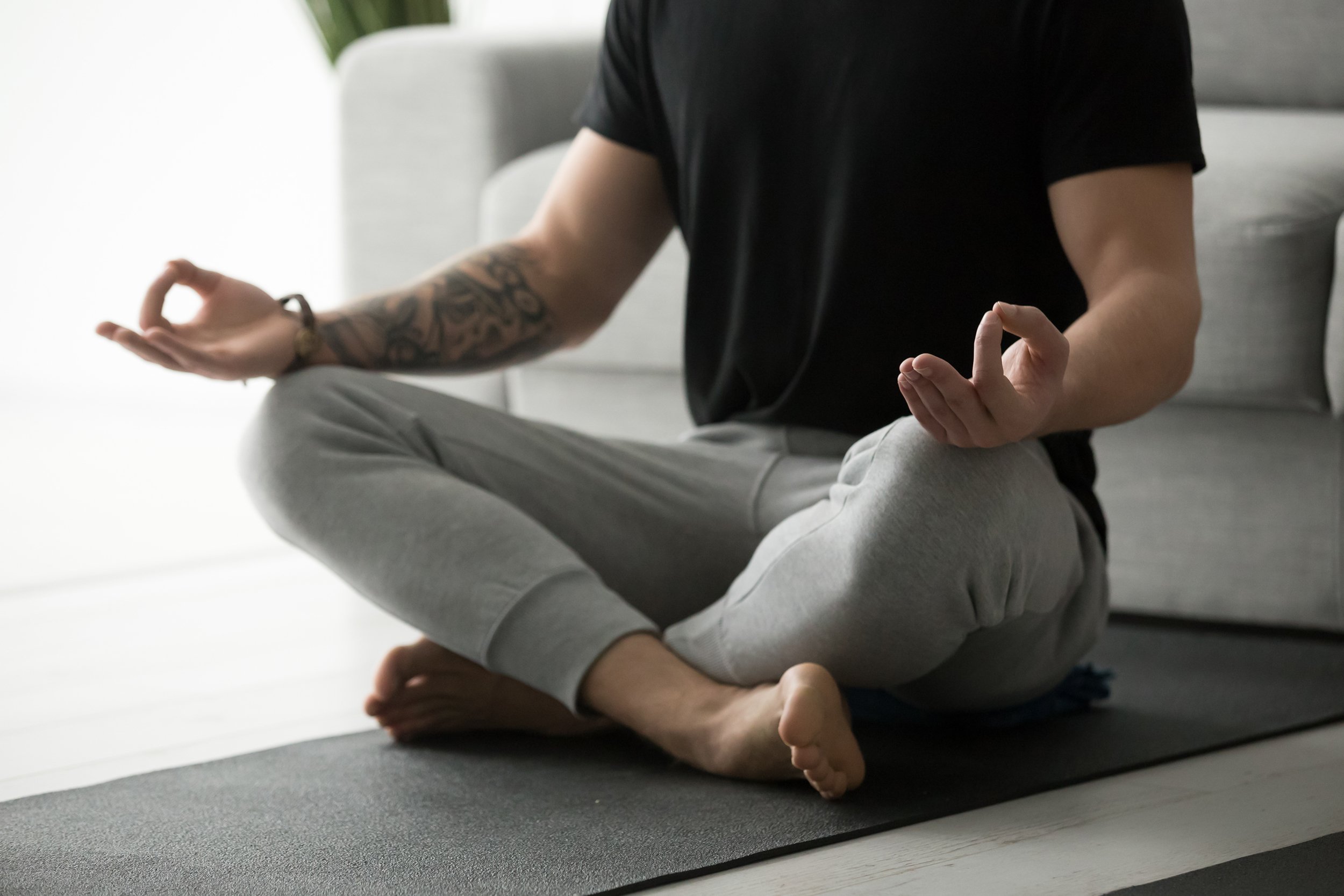The What, Why, and How of Mindfulness Meditation
For a few months now, we’ve been sharing our thoughts about sustainability—how to take better care of our planet. Many of those posts have been externally focused: try composting, use better cleaning products, avoid fast fashion, and so on. Today, we’re taking sustainability inward and talking about how to take better care of ourselves. If you already dig meditation, we hope this post serves as a refresher. If you think meditation is a little woo-woo (it is), we hope this post will serve as inspiration to give it a go.
Everybody else is feeling the stress, too, right?
Life can get really tough sometimes. We feel like circus performers trying to juggle work, family, friends, hobbies, sleep, health, that thing someone asked you to do last week, and more. All at the same time.
It’s a lot to deal with, and most of it is stuff we can’t just … stop doing. So instead, we have to learn to cope with it. Mindfulness meditation can help.
FREEBIE ALERT!!! Keep reading - you’ll be glad you did!
What’s mindfulness meditation?
Through mindfulness meditation, we learn to be fully present—aware of what we’re doing and where we are without becoming reactive or overwhelmed by our environment. We’re aware of physical sensations, emotions, and thoughts, but we let them pass by without fussing over them.
Most people think meditating means emptying your mind completely. They think if they get distracted and caught up in thinking about their to-do list for the rest of the day, they’re doing it wrong. But the truth is, noticing you’ve gotten distracted is actually the whole point.
When you’re practicing mindfulness, you simply mentally note what you were thinking about, bring your awareness back to the present, and let your thoughts pass without judging them or yourself.
It’s not as complicated as it sounds. In fact, we’re all naturally able to execute mindfulness. This happens anytime we bring awareness to our senses, describe how we’re feeling, or think about… what we’re thinking.
While we’re all capable of doing this without really trying, it can be hard with all the noise in our lives. But mindfulness gets so much easier when we intentionally practice it on the daily.
And it’s worth practicing, because it’s really, really good for us.
Benefits of Mindfulness
Mindfulness is an evidence-based practice for a variety of physical and mental health conditions. Its benefits are far-reaching, including:
Reduced stress
Improved chronic pain
Decreased heart rate
Increased immune function
Better sleep
Improved mood
Decreased job burnout
Stabilized blood sugar
Even without regular practice, you can experience the in-the-moment benefits of mindfulness meditation, like decreased stress and lower heart rate.
9 Tips for Better Mindfulness Meditations
If you’re new to meditation, it may seem difficult or awkward at first. But with a little practice, and these tips, it’ll become second-nature in no time.
#1 Get comfy.
While it’s totally normal for your mind to wander during meditation, you don’t want to be distracted by an uncomfortable or hard-to-maintain position. The ideal position for most people is sitting in a chair—or on the couch—with arms and legs uncrossed, feet flat on the floor, and a cushion under their backside. This provides the necessary support to sit upright without becoming too tense.
#2 Use a timer.
A timer—preferably with a gentle alarm—can help you fully focus on the meditation and forget about time. Try a short, 5-minute meditation until you get the hang of it. Then, increase by a couple minutes each time until you’re meditating for about 30 minutes.
#3 Notice your breath.
A key tenant of mindfulness meditation is being aware of your breath. Start paying more attention to it, especially at the beginning of each meditation, to bring you into the right headspace. Breathing deeply in the nose and out the mouth gets you the most oxygen and releases all those soothing brain chemicals.
#4 Use imagery.
It’s hard not to get stuck on our thoughts. Using imagery can help you notice your thoughts during the meditation then let them pass by without judgment or too much attention.
Clouds are a popular mindfulness meditation image. Imagine each thought occuring during your meditation is floating on a cloud. You notice it, but it slowly passes out of your line of sight. Now, you can return to your meditation until the next cloud gently comes along and passes by.
#5 Buddy up.
We could all use a little stress reduction. Find someone else in your life who wants to try mindfulness and practice together. This will help hold you accountable to practicing however much you’d like to. Plus, everything’s more fun with a buddy!
#6 Listen to a guided meditation.
It can be difficult to complete a mindfulness meditation on our own. We often get caught up in, “Am I doing this right?” or “What am I even supposed to think about?”
It’s much easier to hold our attention and remain in the moment when we use guided meditations. Try searching for mindfulness videos on YouTube, or check out mobile apps like Calm and Headspace.
#7 Use everyday tasks as prompts.
We often feel like we don’t have time for even one.more.thing. If the idea of setting aside 30 minutes of your day is a real drag, you don’t have to! Using everyday tasks and chores as prompts for mindfulness can be just as successful.
If you’re washing dishes, pay attention to how the water feels, the bubbles look, and the dishes sound against each other. When brushing your teeth, feel your feet on the floor, brush in your hand, and bristles on your gums.
Tuning into our senses is one of the most effective ways to practice being in the present moment and noticing what’s happening internally and externally.
# 8 Give yourself a break.
Complete surrender to mindfulness meditation takes a lot of practice. If you feel yourself getting overwhelmed, stressed, anxious, panicked, or worried, stop the meditation and collect yourself. Show yourself some compassion in the process. You’re not failing or doing it wrong; you’re learning a new skill that takes practice!
If you’re up for it, try leaning into these emotions instead of avoiding them. Give them your full attention, then allow them to pass. Over time, your mind will learn to better recognize these feelings without getting caught up in or overwhelmed by them.
#9 Talk with your care team.
While the benefits of mindfulness have been well-researched, there are some cases where meditation can make someone feel worse. If you’ve tried and tried but it’s just not helping, please know this: You’re not broken or doing something wrong. Meditation might just not be right for you!
Talk with your care team about other stress-reducing practices that will better work for you and your needs.
Still not convinced?
If you’re still feeling a little “no thanks” about the whole idea of meditation, we get it. And we have a book recommendation for you! Dan Harris’ Meditation for Fidgety Skeptics is a terrific introduction to the practice—and it’s a fun read, too.
Can we send you a copy for free? Tell us who you are and where to send it!


